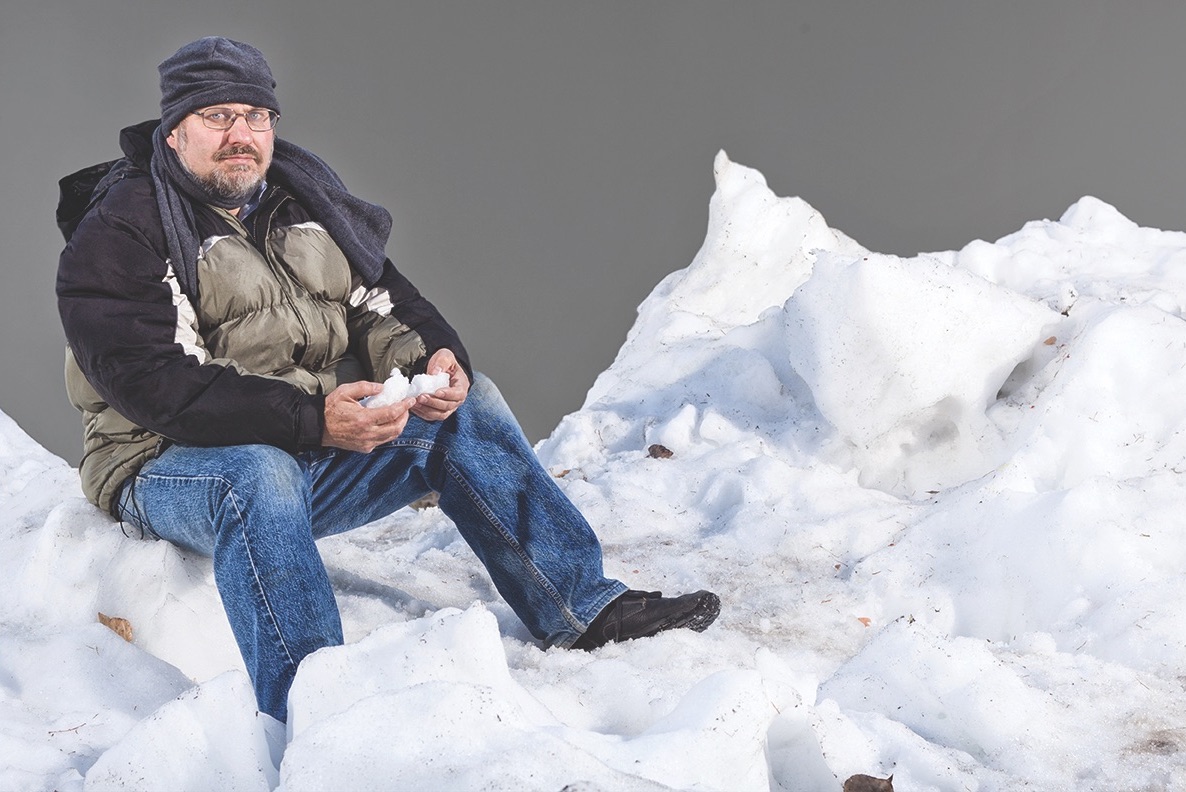Who: Gerhard Reuter
Age: 55
Experience: It sounds like science fiction, but he can change the weather. He’s actually been involved in crews that have flown through clouds in South Africa and seeded them with beads of dry ice, which can regulate the amount of precipitation that falls. Because he grew up in Namibia, a country in southern Africa with very dry deserts, he grew up fascinated by rain and thunderstorms. He studied physics and mathematics in South Africa, earning a Master of Science, and moved to Montreal in 1982, where he completed a PhD on clouds and rain at McGill University. Reuter has flown through intense winter cyclones in Atlantic Canada and New England to measure snowfall and rain. Knowing Alberta is home to the world’s most violent hailstorms, he came to Edmonton in 1990 for a career as a University of Alberta professor in the Department of Earth and Atmospheric Sciences.
- All condensation, regardless of the season, starts as snow in the clouds because the temperature is cold high up. If the snow gets to a temperature above zero degrees [Celsius] after falling from the cloud, it melts and becomes rain.
- Freezing rain is created because temperatures can vary quite a bit as precipitation falls to the ground. If the precipitation is in liquid form as it falls, and is colder than zero degrees [Celsius] and hits the frozen ground, then it freezes on impact, creating freezing rain.
- Thundersnow – a wintertime thunder storm – happens occasionally as a result of warm temperatures at around ground level paired with cool temperatures higher up. Usually the updraft is not strong enough to separate the negative and positive charges, therefore we don’t always get lightning.
- Snowflakes are made up of many ice crystals. They form in the clouds depending on what the temperature is. So, if it’s very cold, they form long needles. With a warm temperature, between zero degrees and minus 10 degrees Celsius, they grow in width. So, ice crystals in warm air become plate-like, like a coin, whereas, if it’s cold, they become needle-like.
- In the winter we have chinook effects. The wind comes down the mountains, and it can take away the snow, eat the snow. Chinook wind can travel 40 kilometres per hour. If you have wind from the west, it has to pass over the mountain, and on the east side of the Rocky Mountains, it descends, it warms and clears, we get dry, cloud-free warm air coming down.
- Hail is usually a warmer weather phenomenon because normally you don’t have big updrafts in the winter time. So, the upward motion holds the hailstone up in the cloud, while it collects ice. The stronger the updraft, the bigger the hail. For really big hail, you might need an upward motion of maybe 15 metres per second. Alberta is the place in the world that has the largest amount of hail because we have the strongest upward motion.
- In Alberta, we even try to ensure that hail is not severe through cloud-seeding. A company called Weather Modification Incorporated performs cloud-seeding by aircraft. You can “seed” a cloud using dry ice pellets made of frozen carbon dioxide that look like sugar cubes. So, the plane flies to the top of the clouds and the pellets are dropped in, and they are at about minus 70 degrees Celsius. The hypothesis is that you have more hailstones, but they are smaller [because] the water mass is distributed over more hailstones.
